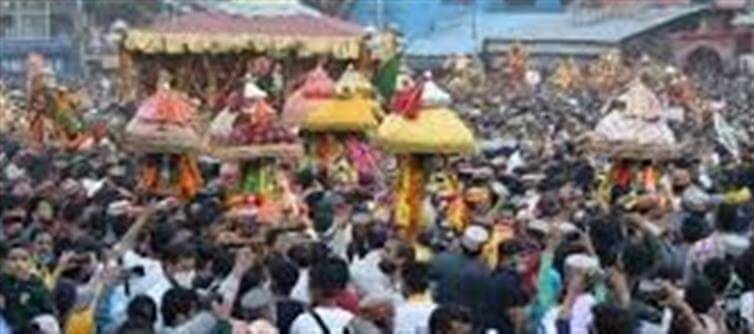
While dussehra or vijayadashami is widely celebrated across india as a single-day festival marking the victory of Lord Rama over the demon king Ravana, the festivities in the picturesque Kullu Valley of himachal pradesh stand apart in both timing and tradition. Kullu dussehra is unique—it begins on vijayadashami but continues for an entire week, making it one of the longest and most vibrant dussehra celebrations in the country.
1. dussehra Across India: A One-Day Celebration
In most parts of india, dussehra marks the end of navratri and celebrates the triumph of good over evil on the 10th day, known as Vijayadashami. people burn effigies of Ravana, symbolizing the destruction of evil, and take part in processions, prayers, and cultural events. This one-day celebration is a culmination of days of fasting, devotion, and festivities.
2. Kullu Dussehra: A Weeklong Festival
In contrast, Kullu dussehra is a weeklong festival that starts on the day of vijayadashami but lasts for seven days, drawing thousands of devotees and tourists from all over india and abroad. This extended celebration highlights the deep-rooted cultural and spiritual traditions of the Kullu region.
3. The legend Behind the Weeklong Festival
The festival’s origin traces back centuries and is linked to local mythology and the region’s ancient temples. According to legend:
· The gods and goddesses from around the valley congregate at the Raghunath temple in Kullu on Vijayadashami.
· The festival celebrates the return of Lord Raghunath (an incarnation of Lord Rama) to the valley after his victory over evil.
· After the main event on vijayadashami, the deities’ images are taken in grand processions to their respective temples in surrounding villages over the next week.
· This procession symbolizes the gods blessing their devotees across the valley, extending the festival’s spirit well beyond a single day.
4. Cultural and Religious Significance
Kullu dussehra is not just a religious event but a grand cultural spectacle featuring:
· Traditional music and dance performances by local artists.
· Vibrant fairs and markets selling handicrafts and local delicacies.
· Rituals performed by priests that honor the local gods and ancestors.
· A communal gathering that strengthens the social fabric of the region.
5. Why the Delay?
The weeklong celebration following vijayadashami allows:
· Time for the local deities to “visit” their followers across the valley.
· More people to participate in the festivities, making it a communal event that connects remote villages.
· The preservation of local customs and rituals distinct from mainstream dussehra celebrations.
Final Thoughts
Kullu Dussehra’s unique timing and elaborate traditions make it a fascinating blend of mythology, religion, and culture. Celebrating a week after the traditional vijayadashami, it offers a rare opportunity to experience one of India’s most captivating and enduring festivals in its full glory.
Disclaimer:
The views and opinions expressed in this article are those of the author and do not necessarily reflect the official policy or position of any agency, organization, employer, or company. All information provided is for general informational purposes only. While every effort has been made to ensure accuracy, we make no representations or warranties of any kind, express or implied, about the completeness, reliability, or suitability of the information contained herein. Readers are advised to verify facts and seek professional advice where necessary. Any reliance placed on such information is strictly at the reader’s own risk.
.jpg)




 click and follow Indiaherald WhatsApp channel
click and follow Indiaherald WhatsApp channel